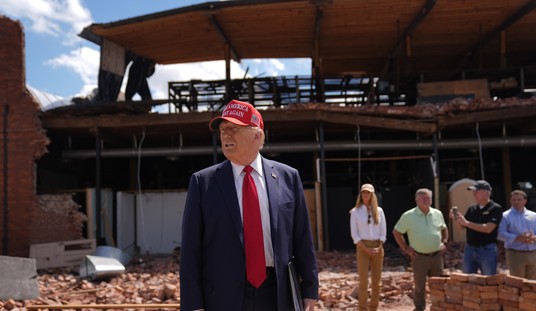Several months ago when the news broke about poisonous pet food and lead-laden toys from China, I asked my local pharmacy to give me a letter stating it is not selling me any prescription drugs imported from China. The reply was, "We don't buy any drugs from China."
I said, "I know you don't, but I want you to check with your suppliers and verify that they don't buy from China." That request was met by thunderous silence.
Now we know why. The Government Accountability Office reported that 80 percent of the drug substances used by U.S. manufacturers to produce prescription drugs is imported. The majority come from China.
That means most of our medicines and medical products are manufactured in thousands of unregulated, unsupervised plants run by managers who have no moral code that imposes an obligation to use ingredients that are safe in preference to those that are cheaper but poisonous or at least dangerous. As Walter Cronkite would say, "That's the way it is."
One of China's largest pharmaceutical companies that export to the United States, Shanghai Hualian, has just been exposed to have marketed contaminated leukemia drugs that paralyzed or otherwise harmed 200 Chinese cancer patients. This is the latest in a string of tainted medicines. Manufacturers who have such little regard for the safety of their own countrymen are unlikely to care about the safety of U.S. patients.
Recommended
Like so many scandals, the problem is not merely the crime but the cover-up of violations; the company refuses to tell what drugs it has exported to the United States. Chinese government authorities have arrested the CEO; maybe he will face the same fate as China's top drug safety official who was executed last year, but that doesn't solve the problem.
We do know that Shanghai is the sole supplier to the United States of the abortion pill, Mifepristone, known as RU-486. The FDA had previously concealed the source of RU-486, and its U.S. distributor, Danco Laboratories, does not list a street address on its Web site or return calls from the news media.
Criticism of the FDA is mounting along with demands that the agency be given huge emergency injections of taxpayer money to do a better job of inspecting imports. But the GAO investigation leads us to believe it is unlikely that the FDA could protect us from contaminated Chinese drugs even if it had 10 times its current budget.
The FDA is so overwhelmed by the flood of cheap drug imports that it is simply incapable of protecting the public from unsafe drugs and medical devices, as well as food. The FDA would need 13 years to inspect every foreign drug plant just once.
Last year, the FDA inspected only 30 foreign drug manufacturing facilities. The FDA estimates the number of drug factories exporting drugs to the United States could be anywhere from 3,000 to 6,800, and the FDA has no idea how many have never been inspected.
The GAO reported that it would take 27 years to inspect every foreign plant that exports medical devices to the United States such as pacemakers and defibrillators. Over the last six years, the FDA inspected only 64 of the 700 plants that produce medical devices.
Unlike domestic inspections, the FDA does not arrive unannounced at a foreign factory; the Chinese have the opportunity to prepare for the inspection. The FDA does not have its own translators but relies on translators provided by the Chinese.
The FDA inspects only about 7 percent of foreign establishments a year. The FDA admits that there are at least 2,133 foreign drug factories for which the FDA could not identify any previous inspection.
The FDA does not have a dedicated staff to conduct foreign inspections but relies on domestic inspectors to volunteer. U.S. inspectors must adhere to an itinerary (presumably arranged by the foreign government) so that multiple inspections can be made on the same trip, and an inspection cannot be extended if problems are discovered.
The entire process of registering facilities that manufacture drugs for export is subject to all kinds of manipulation. There is no system for checking current accuracy or identifying and correcting errors.
The major problem is not the FDA but the multinationals' passion to make free trade a policy that not only locks us into trade agreements that discriminate against U.S. manufacturing and jobs but even trumps U.S. health and safety standards.
Free trade is not only bringing us contaminated drugs and foods, but soon could bring us the products of embryonic stem cell transfers (aka cloning). The Chinese government is financing a new laboratory to conduct research on stem cells, the nuclear transfer and reprogramming of cells, and other cell-engineering innovations.
So, there need be no more demands for U.S. funding of embryonic stem cell research. The globalists can partner with Chinese-funded stem cell factories, like the new stem-cell agreement between Beike Biotechnology and Tsinghua University's Shenzhen Graduate School.


